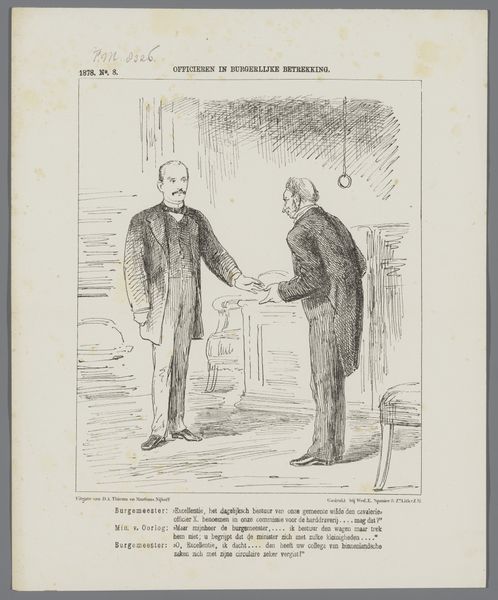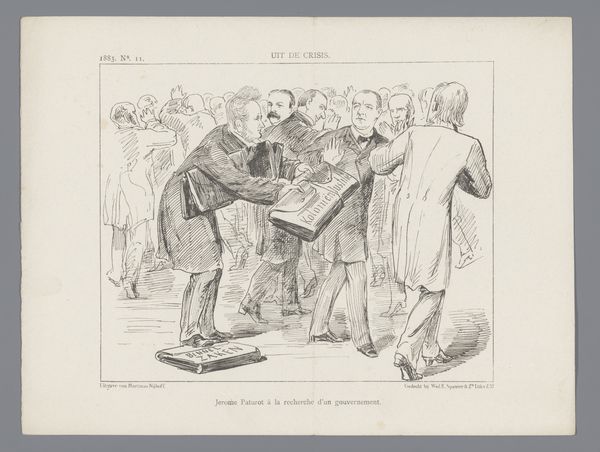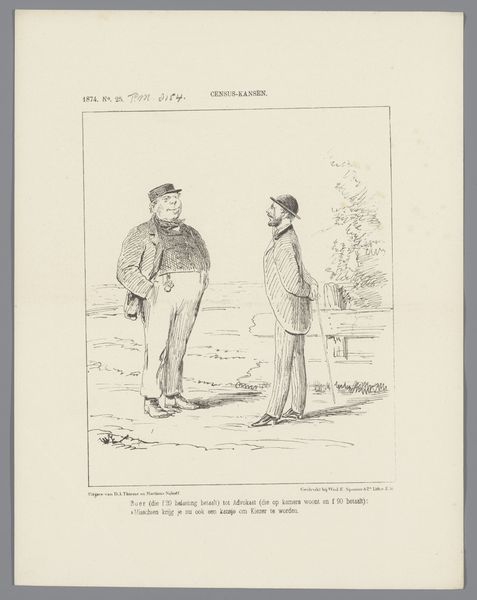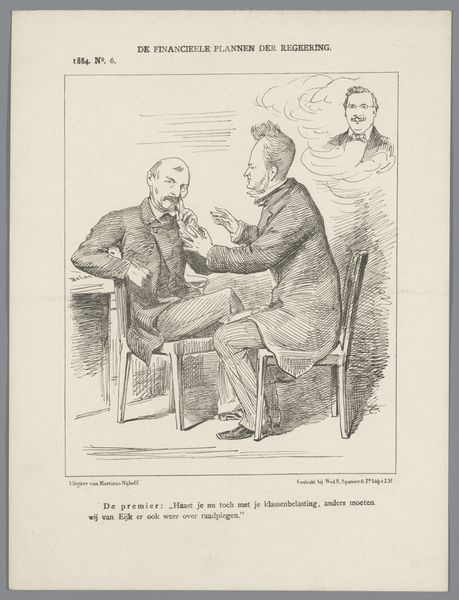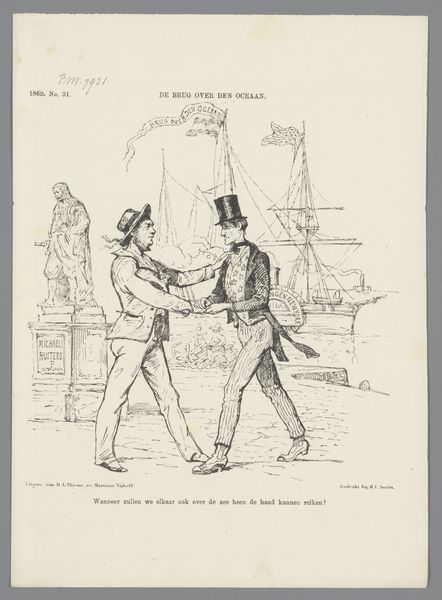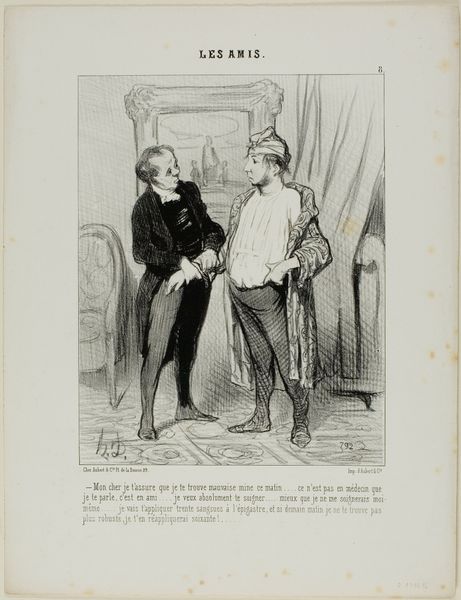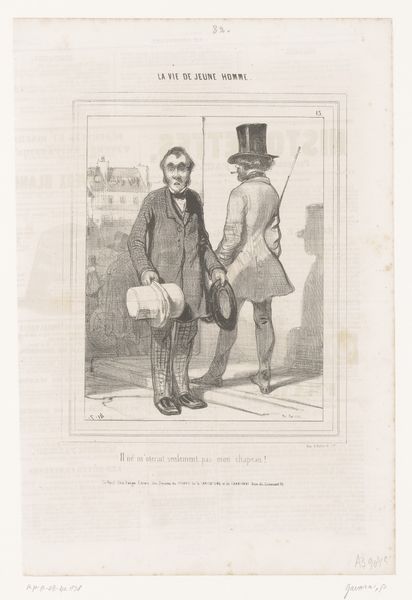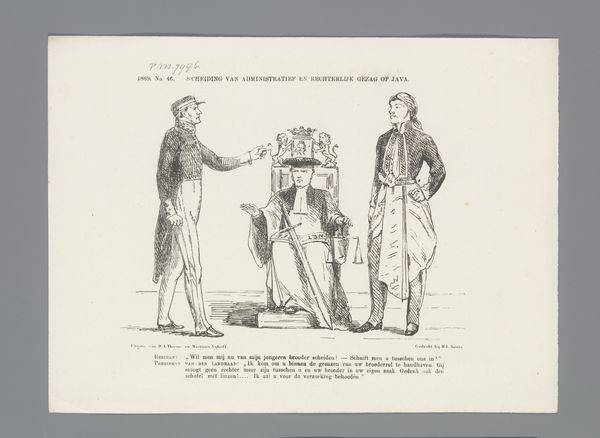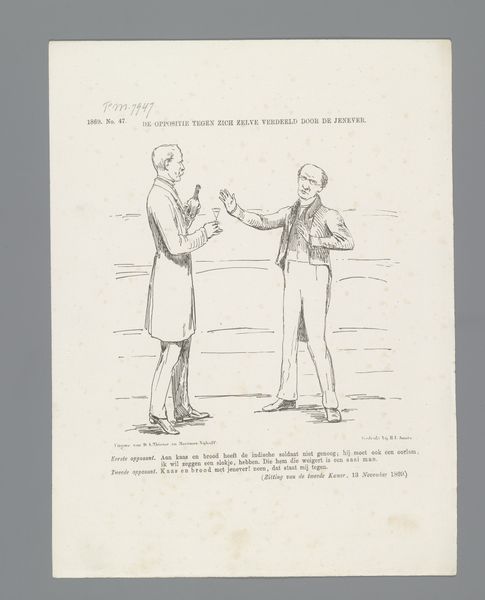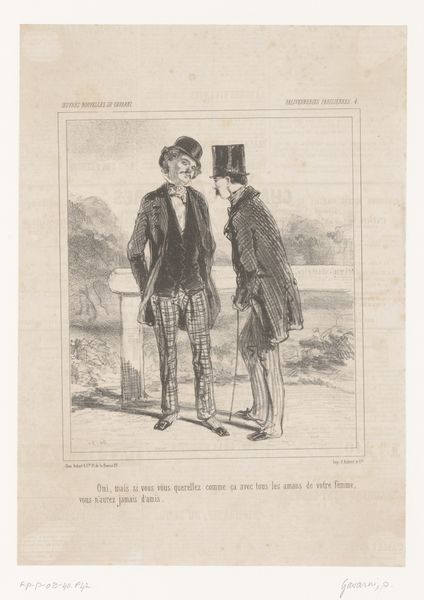
Vijftigjarige Gedenkdag van de Herstelling van Nêerlands Onafhankelijkheid. 17 Nov.r 1863 1863
0:00
0:00
johanneshermanusvandeweijer
Rijksmuseum
drawing, print, paper, ink
#
portrait
#
drawing
#
narrative-art
# print
#
caricature
#
paper
#
ink
#
realism
Dimensions: height 418 mm, width 339 mm
Copyright: Rijks Museum: Open Domain
Curator: This is an 1863 print titled "Vijftigjarige Gedenkdag van de Herstelling van Neerlands Onafhankelijkheid. 17 Nov.r 1863," a piece of narrative art drawn with ink on paper, currently held at the Rijksmuseum. Editor: Immediately, I see a very poised but critical visual statement about… what? Handshakes and the theater of politics? It has a sardonic air about it. Curator: Indeed. It’s a caricature. In this piece by Johannes Hermanus van de Weijer, you’re seeing a moment in Dutch history viewed through a lens of social commentary. Editor: So it seems. The figures, though rendered with detailed realism, are holding objects almost like props – labeled "Max Havelaar" and, if I make it out correctly, "Kirkegange van de Mensheid." It is, dare I say, darkly humorous? Curator: Precisely! "Max Havelaar" alludes to a famous anti-colonial novel, and "Kirkegange van de Mensheid" translates to the "Pathways of Humanity," hinting at ethical considerations. The handshake suggests an acknowledgement of the social commentary put forward by the novel by a Dutch politician of the time, against forced labor on plantations. Editor: And that theatrical backdrop of indistinct onlookers amplifies the sense of public performance, like actors on a stage whose narrative unfolds in our minds even now. It begs us to consider what these politicians and societal elites believe we should and shouldn’t see or question about how this plays out publicly. It looks so calm, yet it makes me so uneasy. Curator: This work compels us to consider how we negotiate complex historical narratives. And the artist here seems intent on challenging us to grapple with the intricacies of power, ethics, and representation within a seemingly straightforward image. Editor: Yes. This image isn't simply depicting an event; it's inviting us to question whose story gets told and how—and, critically, what isn’t acknowledged even in what seems like an obvious display of common accord. Curator: Absolutely. The drawing really opens a space for continuous interpretation.
Comments
No comments
Be the first to comment and join the conversation on the ultimate creative platform.
